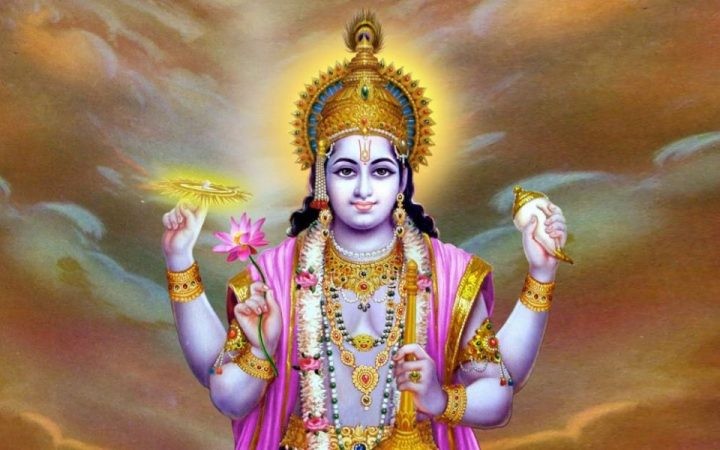
Ekadashi is a significant Hindu fasting day dedicated to the worship of Lord Vishnu. It falls on the 11th day of each lunar fortnight and is observed twice a month. It is believed that observing Ekadashi vrat bestows the blessings of Goddess Lakshmi and brings devotees closer to attaining moksha or liberation. This year, the Ekadashi falling on September 10th is considered particularly auspicious due to the occurrence of specific celestial yogas: Ravi Pushya Yoga and Sarvarth Siddhi Yoga. However, a common dilemma for women arises when their menstrual cycle coincides with Ekadashi. Should they observe the fast or not? In this article, we explore the spiritual perspective and guidance provided by ancient scriptures on this matter.
Spiritual Guidance on Ekadashi Fasting During Menstruation:
In Hinduism, Ekadashi fasting is considered highly auspicious and is meant to purify the mind and body. However, it is essential to understand that spiritual practices and rituals should always be carried out with a sense of purity and devotion. When menstruation occurs during Ekadashi, it is believed that women can still observe the fast, following specific guidelines.
Maintain Cleanliness and Purity:
Regardless of whether one is observing Ekadashi or not, maintaining cleanliness and purity during menstruation is of utmost importance. Take regular baths and change sanitary products as needed to stay clean.
Avoid Physical Contact with Ritual Objects:
During menstruation, it is advised not to touch or handle ritual objects such as idols or sacred texts. Seek the assistance of a family member or priest if necessary for performing rituals.
No Food or Water:
On Ekadashi, devotees typically observe a strict fast without consuming food or water for 24 hours. However, during menstruation, women can follow a modified fast known as "nirjala Ekadashi," which involves abstaining from food and water but not waterless fasting.
Mental Worship:
Instead of performing physical rituals, women can engage in mental worship and meditation. They can mentally offer prayers to Lord Vishnu and seek His blessings. Mantra recitation and meditation can be powerful ways to connect spiritually during this time.
Avoid Cooking or Handling Food:
Preparing meals or handling food items meant for offerings is discouraged during menstruation. If possible, arrange for someone else to perform these tasks.
Seek Blessings from a Distance:
If you have a family altar or temple at home, you can offer prayers from a distance without physical contact with the deities. This ensures that you maintain the sanctity of the rituals.
Resolve to Observe Ekadashi Vrat:
Before the Ekadashi day, take a sankalpa (a solemn vow) to observe the fast and seek Lord Vishnu's blessings despite the menstrual cycle. This mental commitment is essential for maintaining the spiritual significance of the vrat.
Dress Modestly:
While observing the Ekadashi fast during menstruation, it is advisable to wear modest clothing to maintain a sense of reverence and purity.
The Teachings of Sage Shringi:
Sage Shringi from the Ramayana era is said to have provided guidance on observing Ekadashi during menstruation. He emphasized the importance of not consuming food during Ekadashi, even for women undergoing their menstrual cycle. His
teachings can be summarized as follows:
"Ekadasyam na bhunjiya, nari drishte rajasyapi":
Women should not consume food on Ekadashi, even during their menstrual cycle, and this rule applies to all, regardless of their royal status.
"Saner vare rave samkrantyam grahane; tyajya na Ekadashi rajan sarva daiveti nishchayah":
Ekadashi fasting should never be abandoned, even on Saturdays, Sundays, eclipse days, or during the conjunction of celestial bodies. It is a vow to be upheld with determination.
Ekadashi is a spiritually significant day in Hinduism, and observing the fast during menstruation is indeed possible by following the guidance provided by ancient scriptures and sages like Sage Shringi. Maintaining cleanliness, mental worship, and a strong sankalpa are key aspects of observing Ekadashi vrat during menstruation. It is essential to approach this practice with devotion, purity, and a deep connection with the divine, ensuring that the spiritual significance of the vrat remains intact. Ultimately, the choice to observe Ekadashi during menstruation is a personal one, and individuals should decide based on their faith and beliefs, keeping in mind the principles of purity and devotion.
Which is the first religion on earth?
You may not know these things related to Shri Krishna
How to Make Panchamrit? Pleasing Lord Krishna on Janmashtami